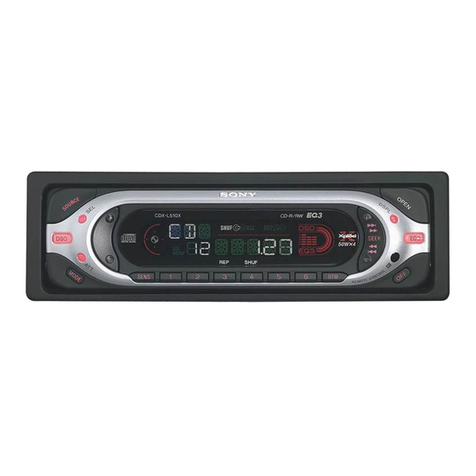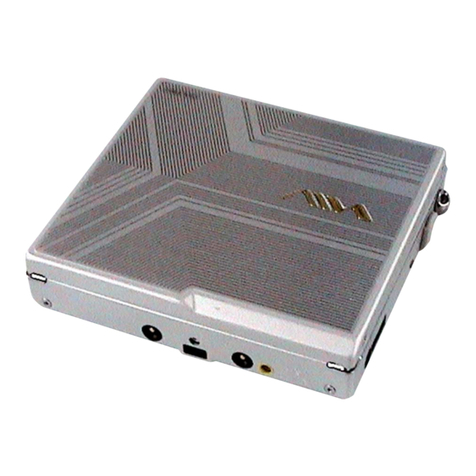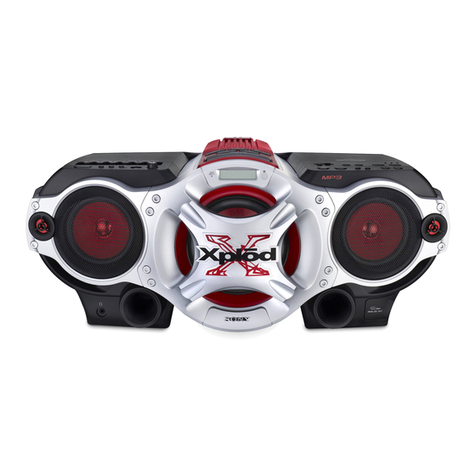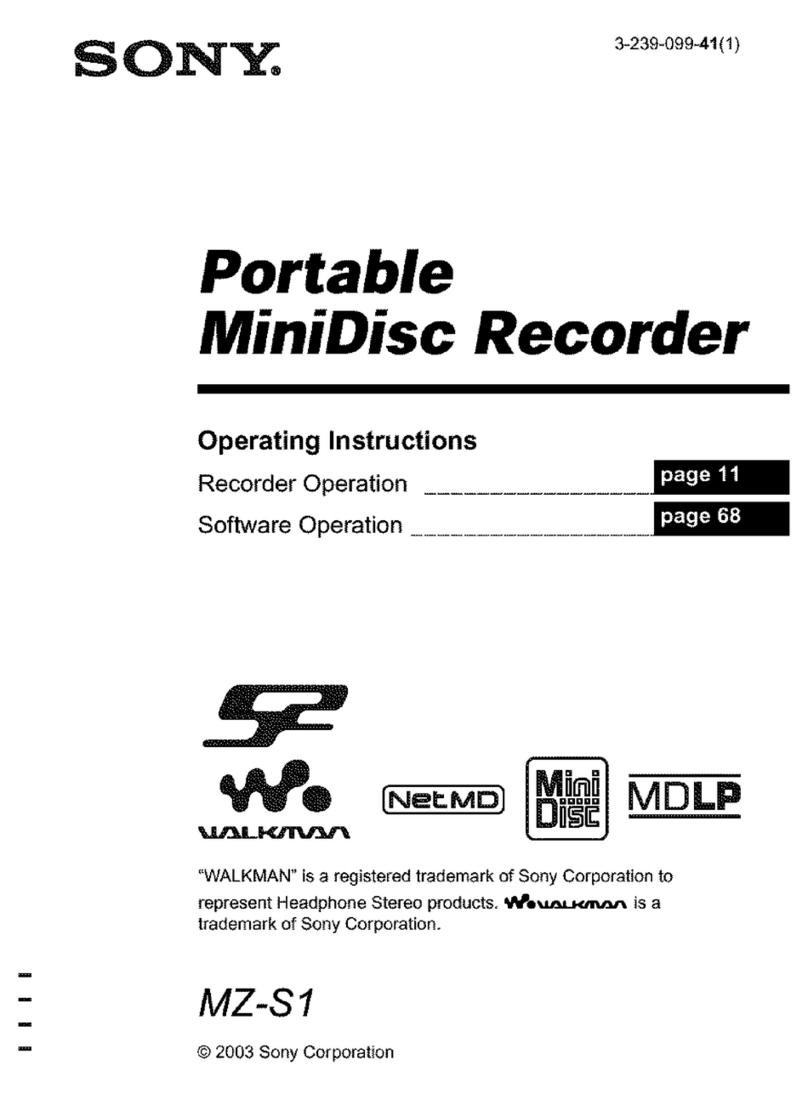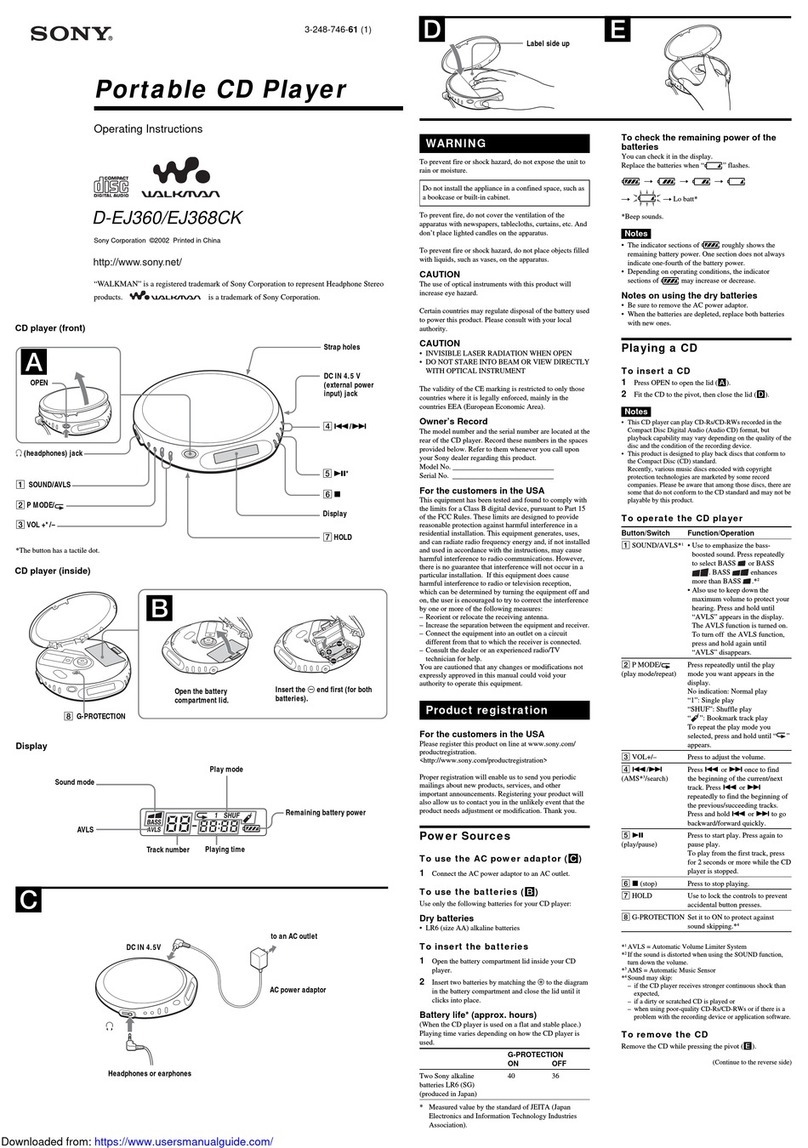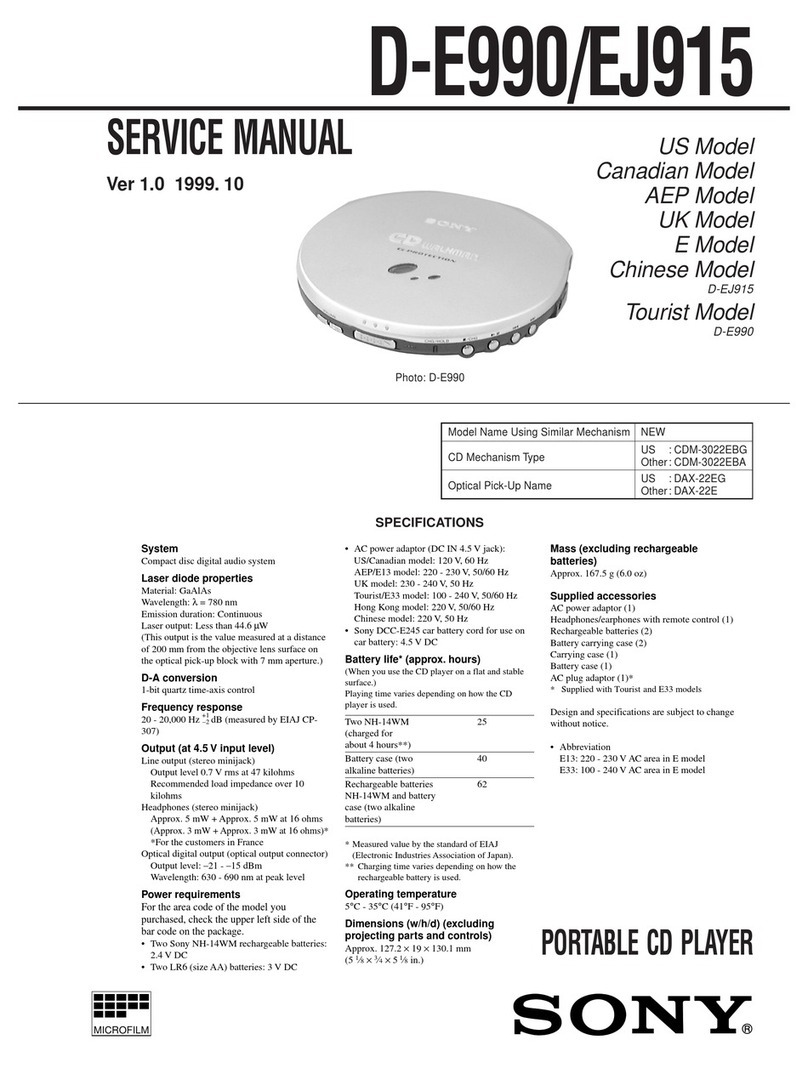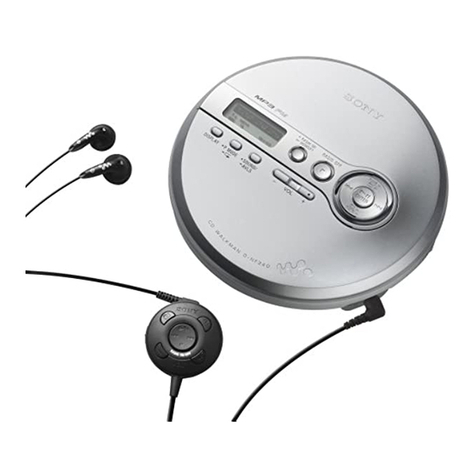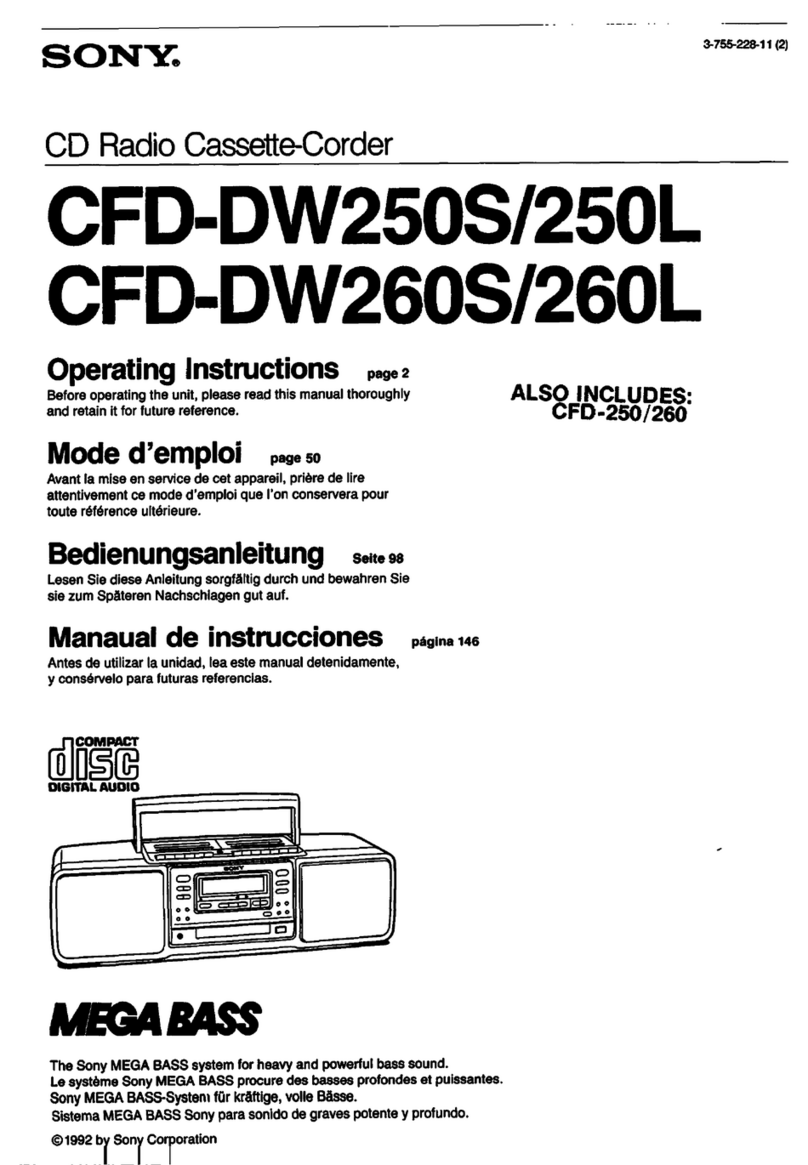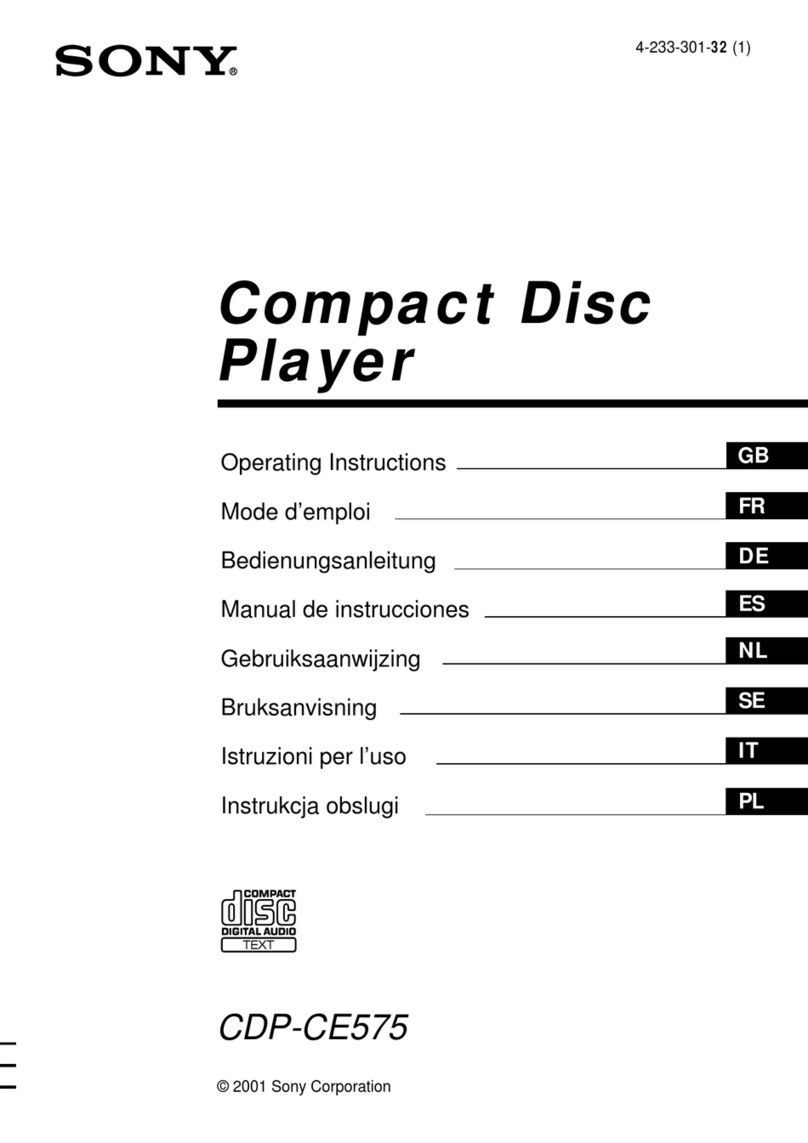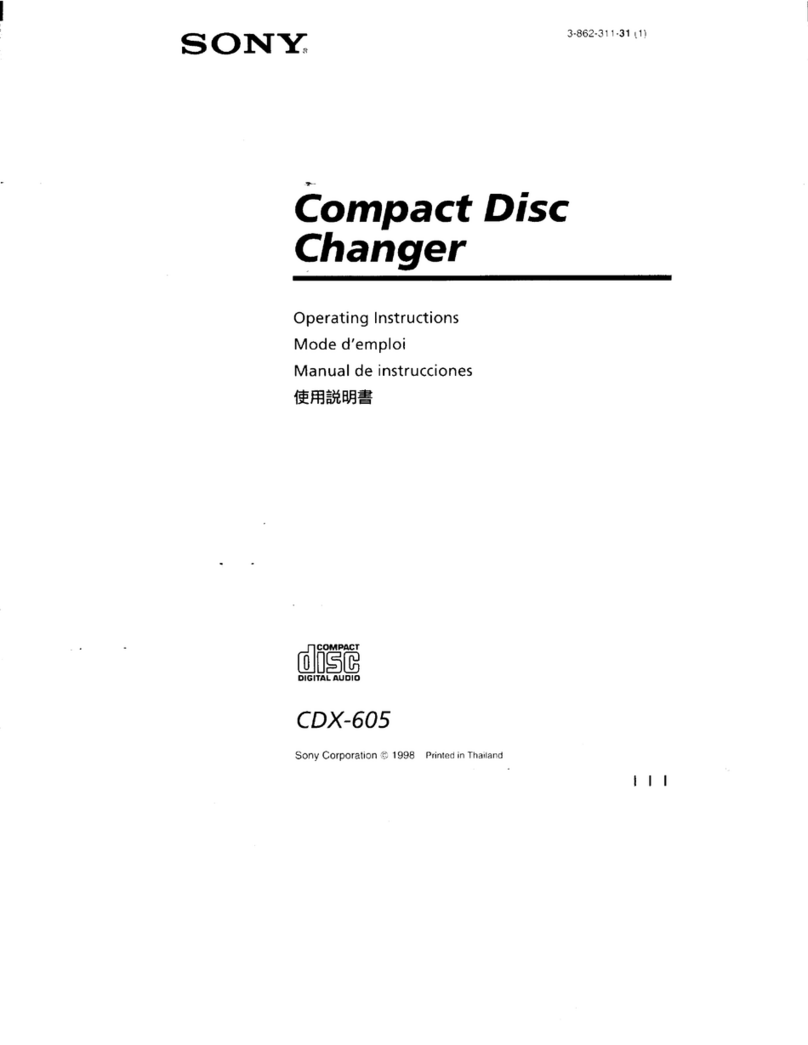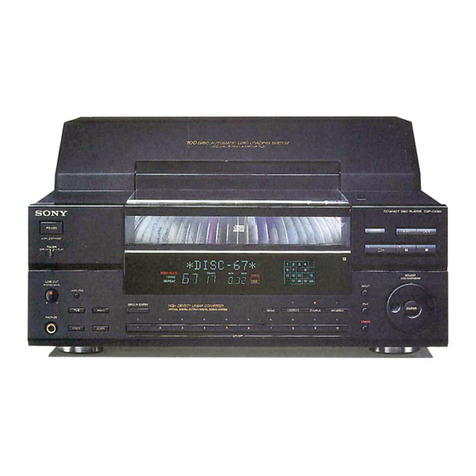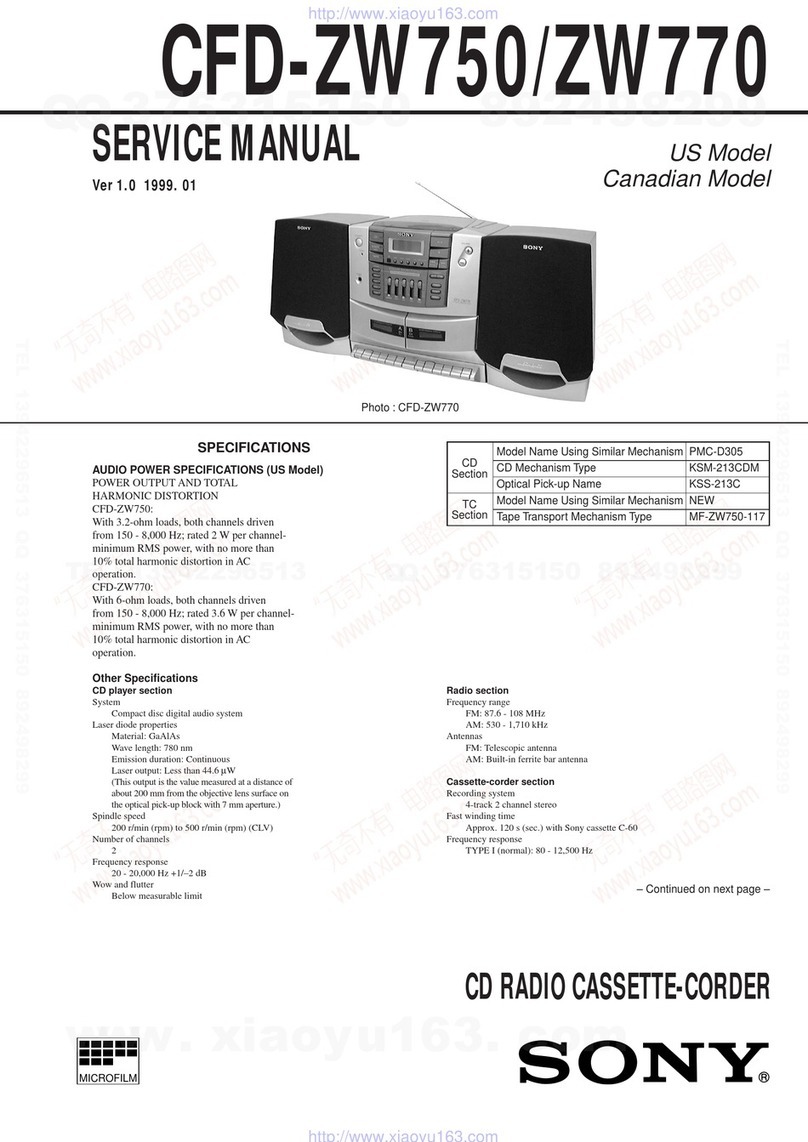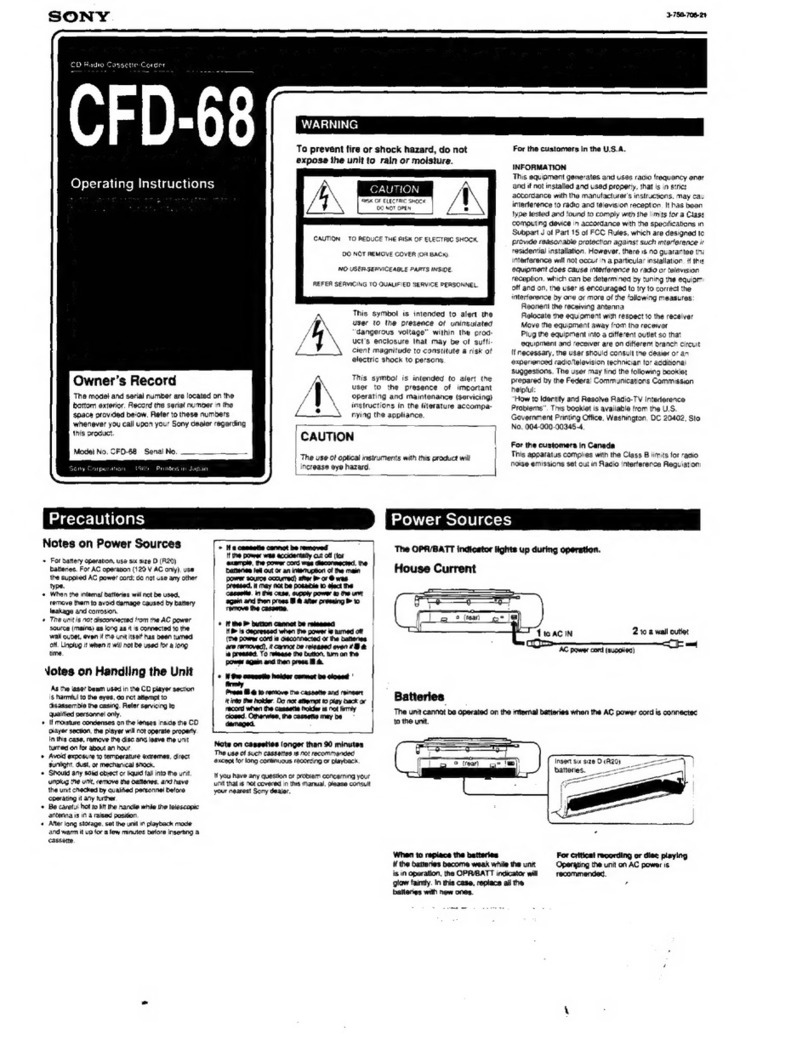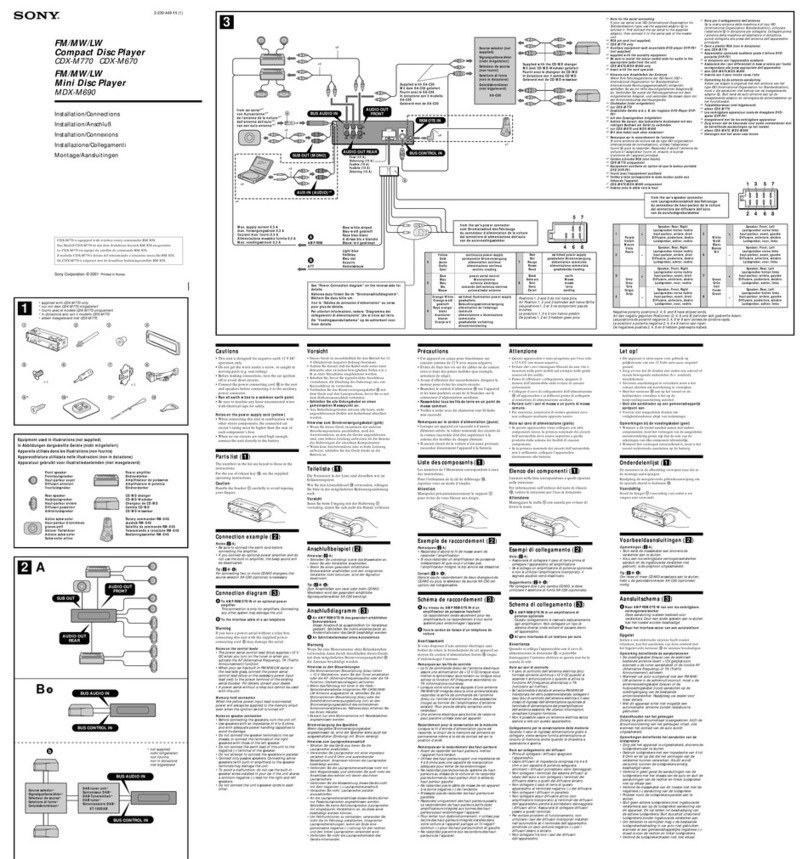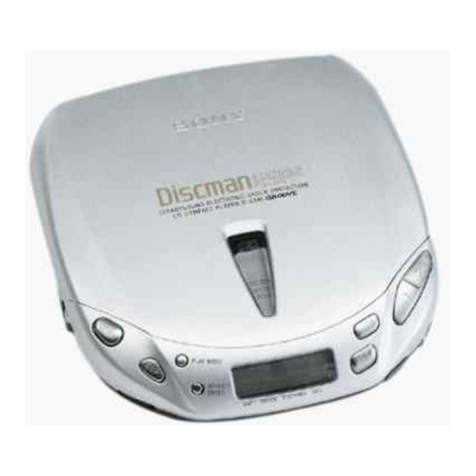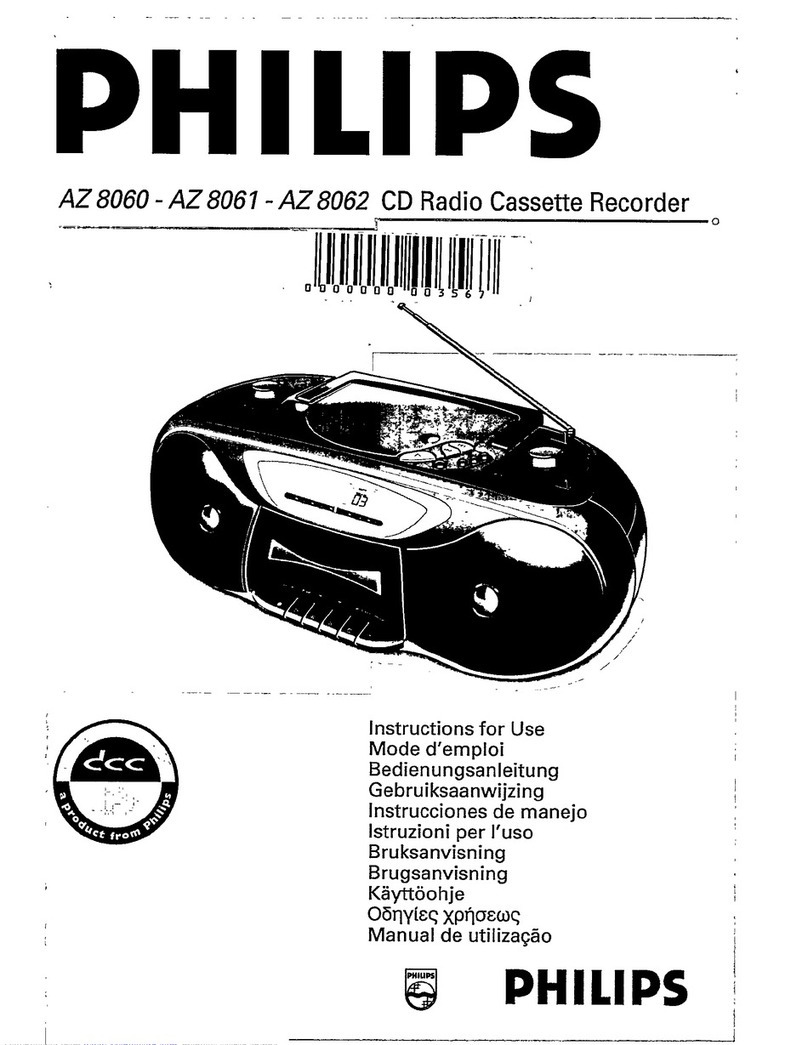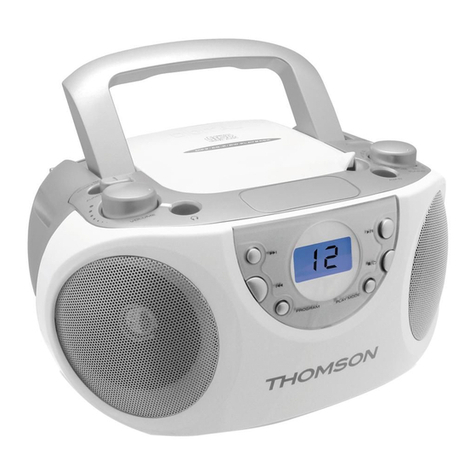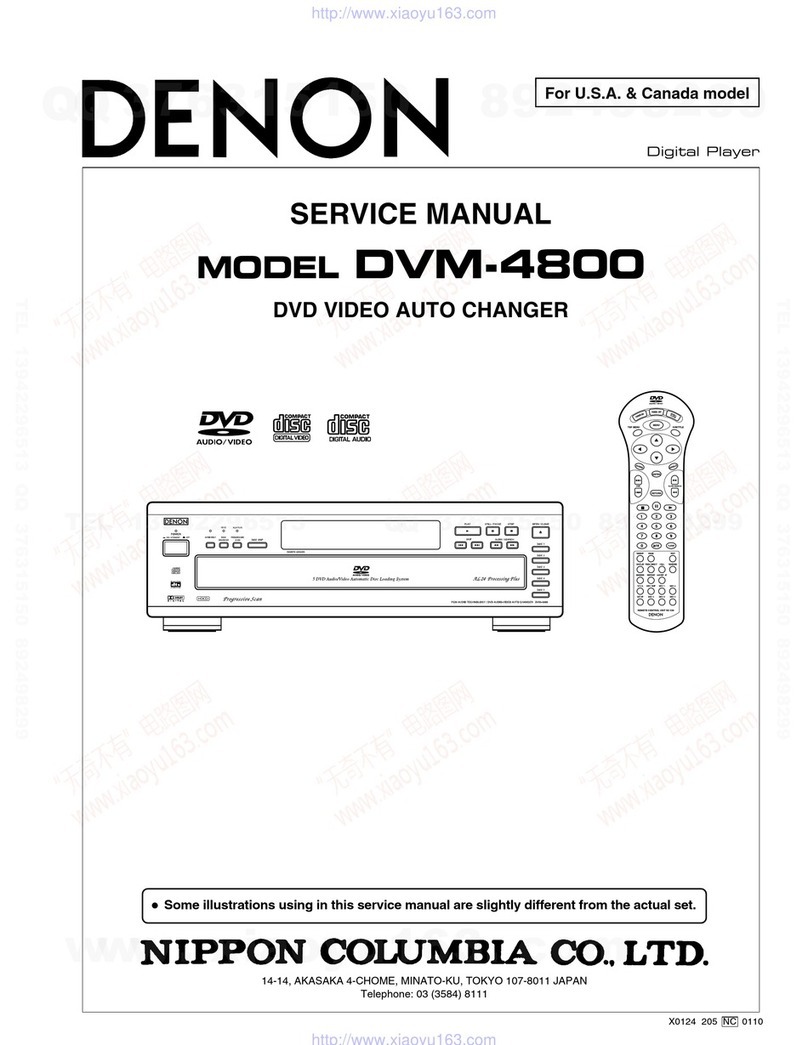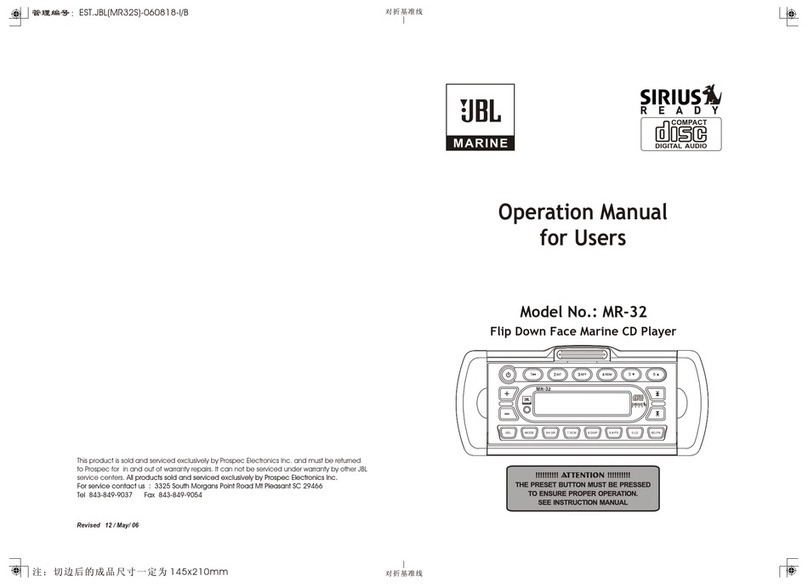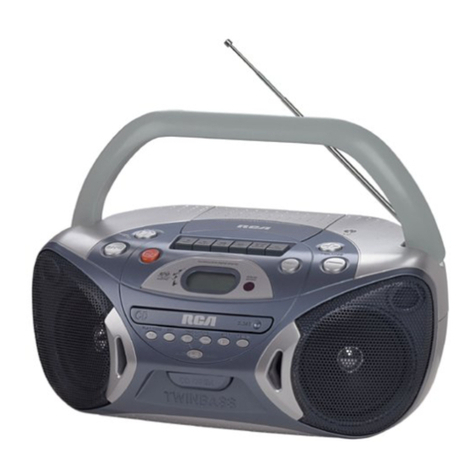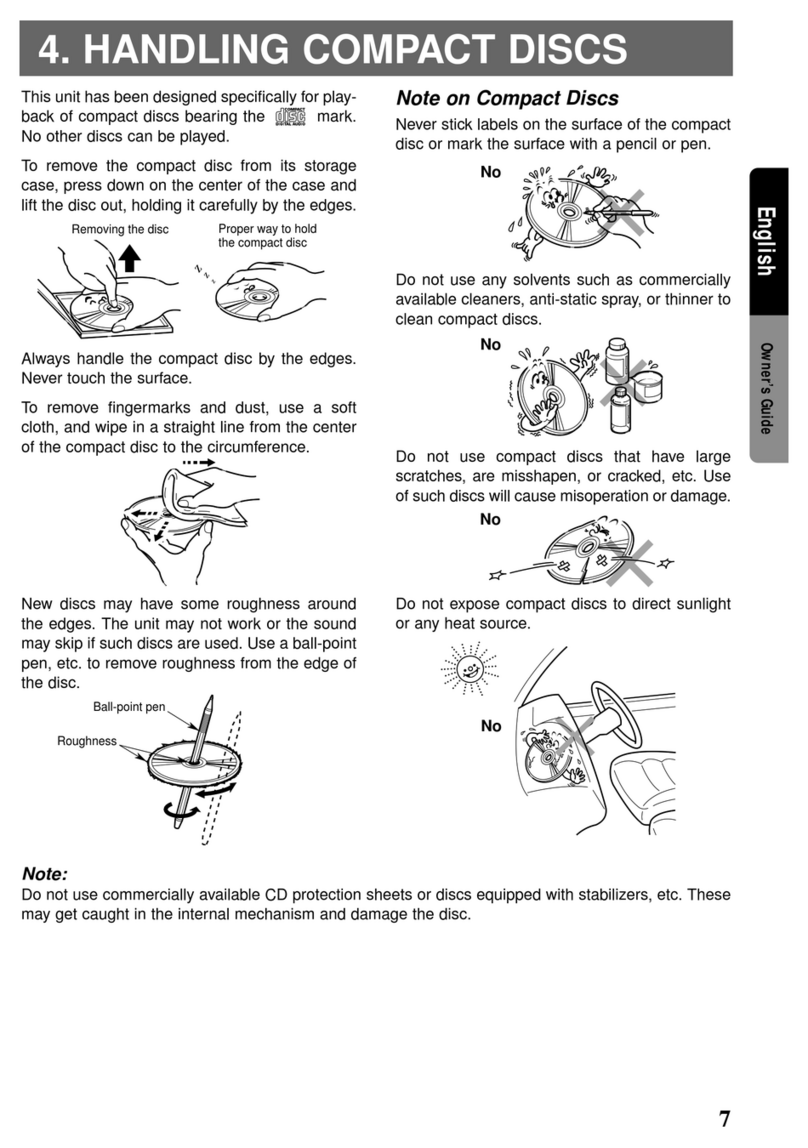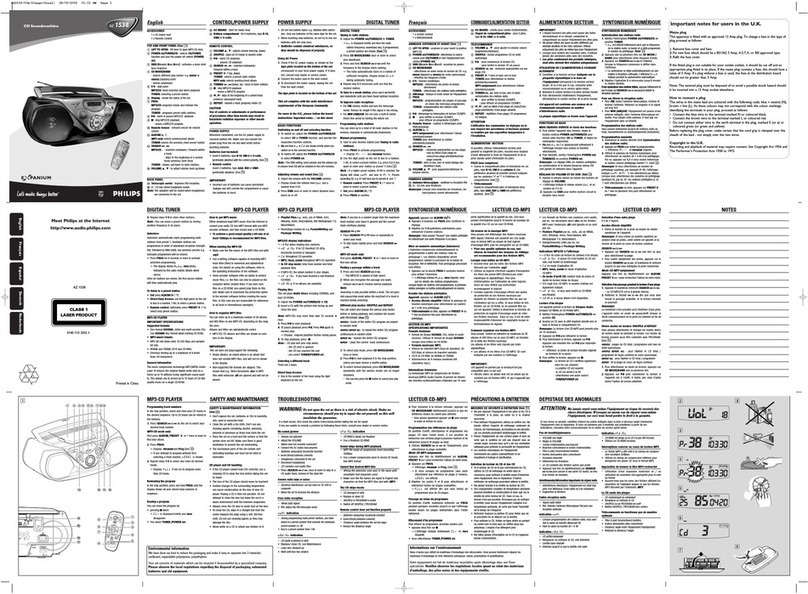
3
D-NF400/NF401
Notes on chip component replacement
•Never reuse a disconnected chip component.
•Notice that the minus side of a tantalum capacitor may be dam-
aged by heat.
Flexible Circuit Board Repairing
•Keep the temperature of the soldering iron around 270 ˚C dur-
ing repairing.
•Do not touch the soldering iron on the same conductor of the
circuit board (within 3 times).
•Be careful not to apply force on the conductor when soldering
or unsoldering.
TABLE OF CONTENTS
1. SERVICING NOTES ............................................... 4
2. GENERAL ................................................................... 6
3. DISASSEMBLY
3-1. Disassembly Flow ........................................................... 7
3-2. Cabinet (Lower) Section ................................................. 7
3-3. Optical Pick-up Assy (CDM-3325ER) ........................... 8
3-4. MAIN Board ................................................................... 8
3-5. Liquid Crystal Display Panel (LCD2001),
SWITCH Board............................................................... 9
4. TEST MODE ............................................................... 10
5. ELECTIRICAL CHECK .......................................... 11
6. DIAGRAMS
6-1. Block Diagram – MAIN Section – ................................ 12
6-2. Block Diagram – TUNER Section – ............................. 13
6-3. Note for Printed Wiring Boards and
Schematic Diagrams ....................................................... 14
6-4. Schematic Diagram – MAIN Board (1/7) ..................... 15
6-5. Schematic Diagram – MAIN Board (2/7) ..................... 16
6-6. Schematic Diagram – MAIN Board (3/7) ..................... 17
6-7. Schematic Diagram – MAIN Board (4/7) ..................... 18
6-8. Schematic Diagram – MAIN Board (5/7) ..................... 19
6-9. Schematic Diagram – MAIN Board (6/7) ..................... 20
6-10. Schematic Diagram – MAIN Board (7/7) ..................... 21
6-11. Printed Wiring Board
– MAIN Board (Component Side) – .............................. 22
6-12. Printed Wiring Board
– MAIN Board (Conductor Side) – ................................ 23
6-13. Printed Wiring Board – SWITCH Board – ................... 24
6-14. Schematic Diagram – SWITCH Board – ...................... 25
7. EXPLODED VIEWS
7-1. Cabinet (Inner) Section ................................................... 36
7-2. Cabinet (Upper) Section ................................................. 37
7-3. Cabinet (Lower) Section ................................................. 38
7-4. Optical Pick-up Section (CDM-3325ER)....................... 39
8. ELECTRICAL PARTS LIST ............................... 40
CAUTION
Use of controls or adjustments or performance of procedures
other than those specified herein may result in hazardous ra-
diation exposure.
On AC power adaptor
•Use only the AC power adaptor supplied.
If your CD player is not supplied with the
one, use the AC-E45HG AC power
adaptor. Do not use any otherAC power
adaptor. It may cause a malfunction.
Polarity of the plug
This appliance is classified as a CLASS 1 LASER product.
The CLASS 1 LASER PRODUCT MARKING is located on
the rear exterior.
About CD-Rs/RWs
This CD player can play CD-Rs/RWs recorded in the ATRAC3plus/
ATRAC3, MP3 or CDDA*format, but playback capability may
vary depending on the quality of the disc and the conditionof the
recording device.
*CDDA is the abbreviation for Compact Disc DigitalAudio. It is
a recording standard used for the AudioCDs.
UNLEADED SOLDER
Boards requiring use of unleaded solder are printed with the lead-
free mark (LF) indicating the solder contains no lead.
(Caution: Some printed circuit boards may not come printed with
the lead free mark due to their particular size)
: LEAD FREE MARK
Unleaded solder has the following characteristics.
•Unleaded solder melts at a temperature about 40 ˚C higher than
ordinary solder.
Ordinary soldering irons can be used but the iron tip has to be
applied to the solder joint for a slightly longer time.
Soldering irons using a temperature regulator should be set to
about 350 ˚C.
Caution: The printed pattern (copper foil) may peel away if the
heated tip is applied for too long, so be careful!
•Strong viscosity
Unleaded solder is more viscou-s (sticky, less prone to flow)
than ordinary solder so use caution not to let solder bridges oc-
cur such as on IC pins, etc.
•Usable with ordinary solder
It is best to use only unleaded solder but unleaded solder may
also be added to ordinary solder.
w
w
w
.
x
i
a
o
y
u
1
6
3
.
c
o
m
Q
Q
3
7
6
3
1
5
1
5
0
9
9
2
8
9
4
2
9
8
T
E
L
1
3
9
4
2
2
9
6
5
1
3
9
9
2
8
9
4
2
9
8
0
5
1
5
1
3
6
7
3
Q
Q
TEL 13942296513 QQ 376315150 892498299
TEL 13942296513 QQ 376315150 892498299
http://www.xiaoyu163.com
http://www.xiaoyu163.com
